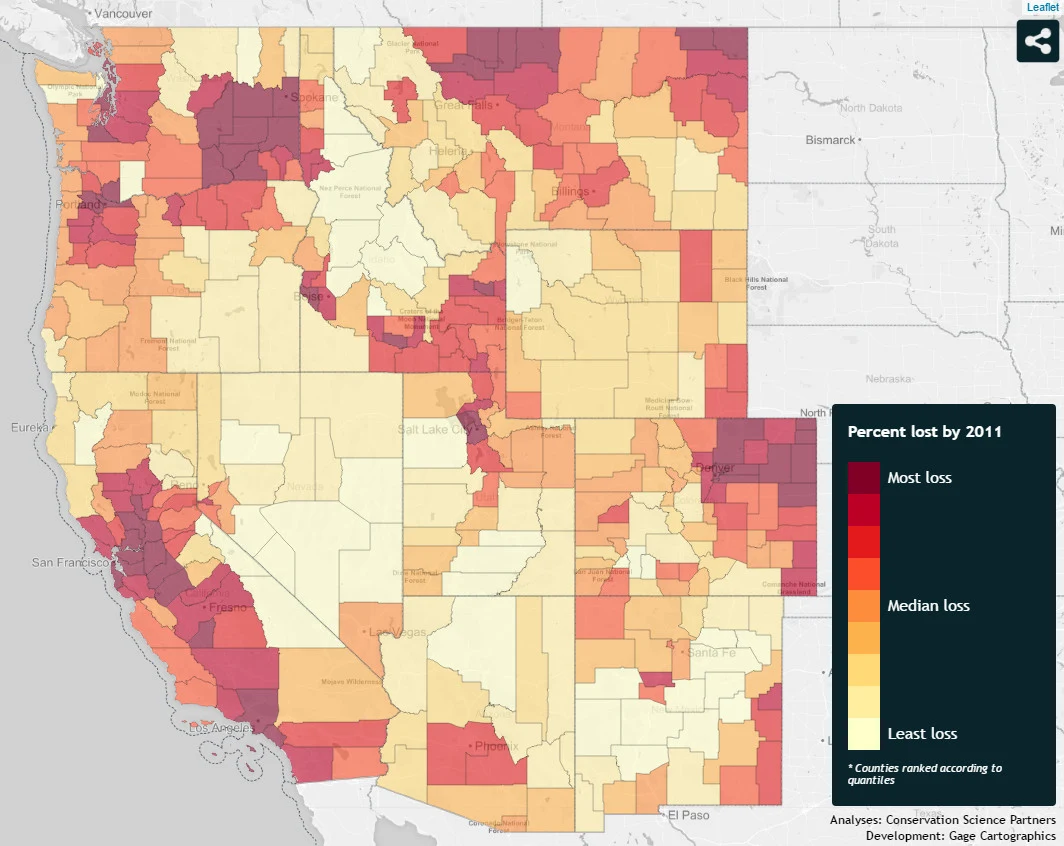Every two and a half minutes, a football field's worth of open, natural area in the western United States disappears to human development.
Click anywhere on the map to explore how and why open lands in the West are disappearing so quickly.
"Los Angeles
In 2011, human development covered 42.5% of all lands in Los Angeles County, or total of 1,101,508 acres of land. Between 2001 and 2011, the county lost 33,508 acres of natural areas to development. The proportion of natural areas lost each year in Los Angeles County is 107.7% higher than the annual rate of loss in California and 208.8% higher than the annual rate of loss across the West."
Click anywhere on the map to explore how and why open lands in the West are disappearing so quickly.
"Los Angeles
In 2011, human development covered 42.5% of all lands in Los Angeles County, or total of 1,101,508 acres of land. Between 2001 and 2011, the county lost 33,508 acres of natural areas to development. The proportion of natural areas lost each year in Los Angeles County is 107.7% higher than the annual rate of loss in California and 208.8% higher than the annual rate of loss across the West."

This post may contain affiliate links. As an Amazon Associate, I earn from qualifying purchases.
Comments
Post a Comment